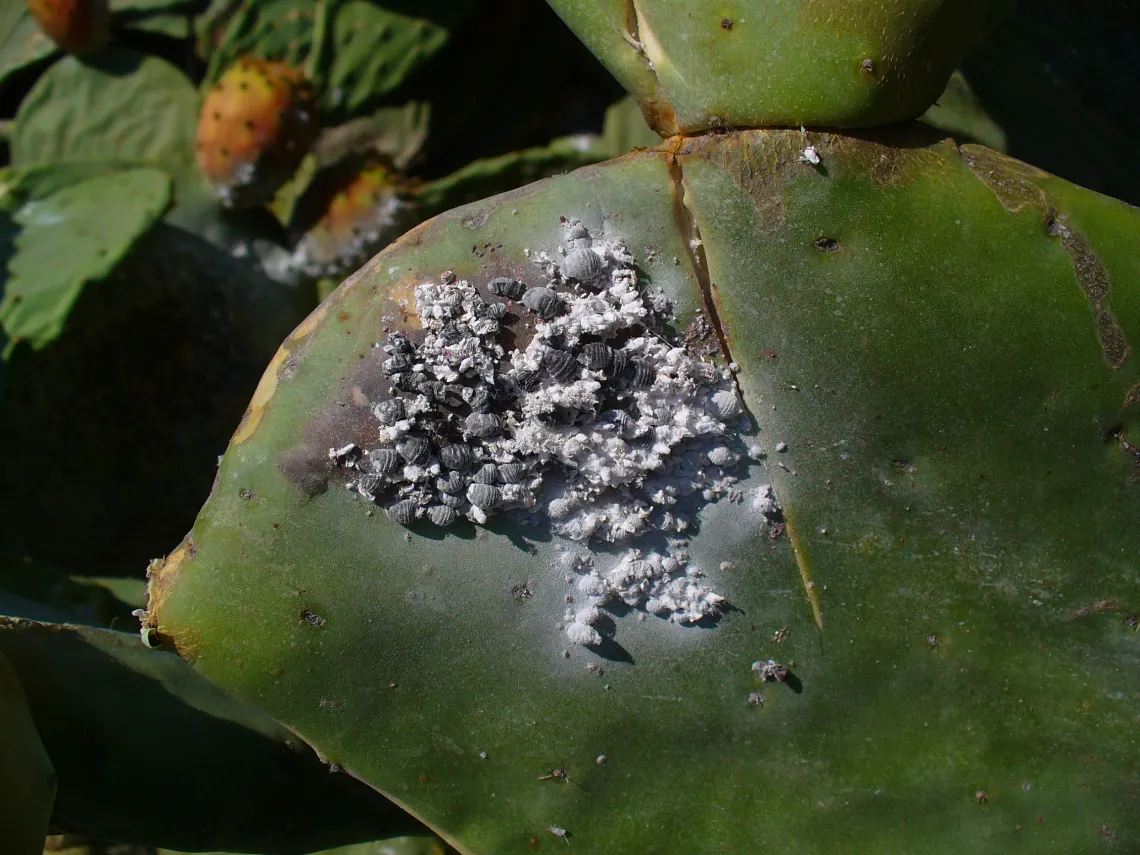
Cochineal (Dactylopius coccus) on cactus. Public domain.
Knowing the history of material changes allows scholars to construct a timeline for southwestern textile types. Changes in yarns, fiber quality, and dyes occurred frequently during the 1800s. When these changes are considered together with a textile’s designs and individual history, production dates can be estimated to create a more complete history of Navajo textiles.
Handspun yarns include single-spun strands of naturally colored, undyed sheep’s wool as well as wool colored with vegetal or synthetic dyes. The earliest Navajo sheep had clean, lustrous wool, while breeds after the 1880s had curlier, greasier wool. Navajo spinners cleaned and aligned the wool fibers with their fingers or with wire-toothed combs, called carders, and twisted the wool together on hand spindles.
Raveled yarns came from bolts of imported fabrics that weavers cut into strips and unraveled, reweaving the yarns into blankets. Raveled yarns, often used in groups of two to six, appear to have small ridges or kinks and are sometimes speckled. Some researchers call these yarns bayeta, from the Spanish name for one type of cloth that was unraveled.
Commercial yarns, produced in textile mills and obtained through government annuities and trade, introduced new shades of red, orange, yellow, purple, blue, and green. Commercial yarns have a regularly ridged texture and solid coloring, and were plied, or twisted, from multiple spun strands of wool.
Red dyes can be chemically identified to help scholars interpret Navajo textile histories. From 1800 through the 1870s, insect dyes—cochineal from Mesoamerica and lac from India—colored many raveled and commercial red yarns. Beginning in the late 1860s, many red yarns contained synthetic dyes. Red dyes can be identified by several chemical tests, including spectrophotometry.





